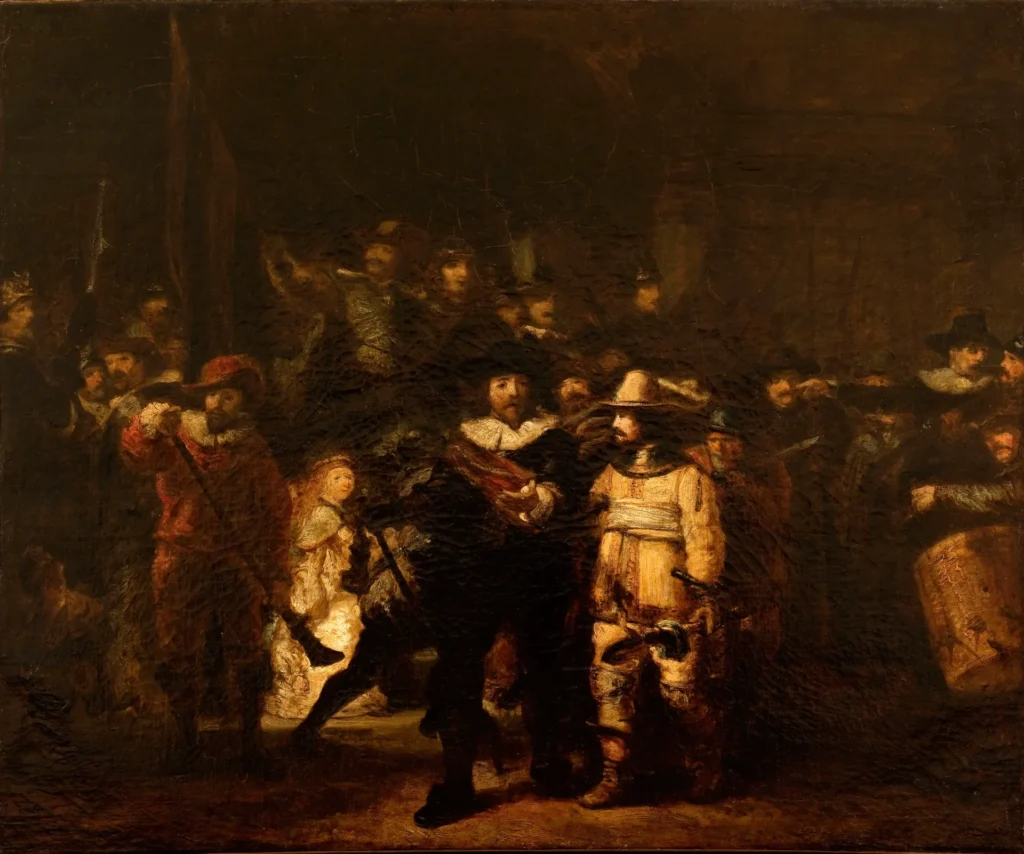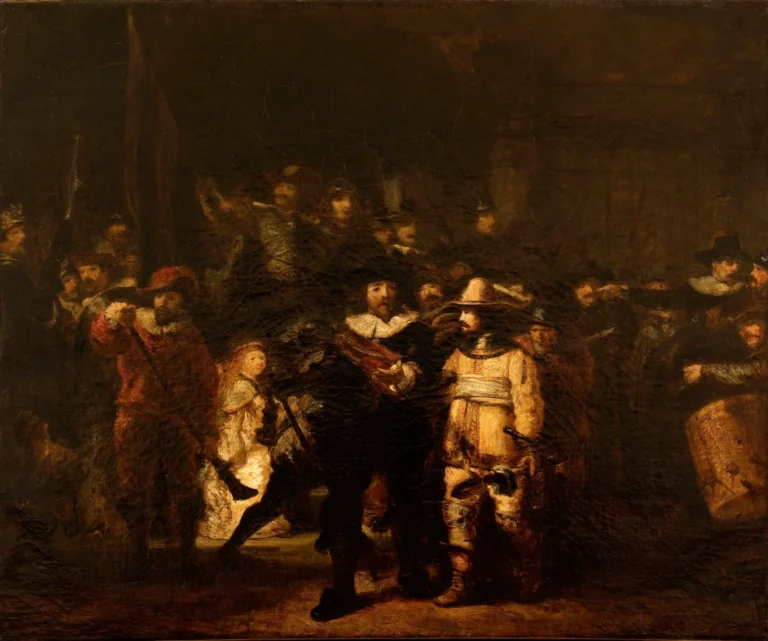The Night Watch
The Night Watch, officially known as Militia Company of District II under the Command of Captain Frans Banning Cocq, is an iconic artwork by Rembrandt van Rijn created in 1642. This grand painting captures the militia of Amsterdam in vibrant motion rather than the static poses typical of group portraits at the time. Its masterful use of chiaroscuro creates a dramatic effect, enhancing the importance of certain figures over others. The piece is notable not only for its artistic accomplishments but also for its historical relevance as a testament to 17th-century Dutch civic pride, now housed in the Rijksmuseum, Amsterdam.
Year 1642
About the Artwork
Did You Know
Liked what you see? Add it to your collection.
Enjoyed reading? Share it.
... continued
The Night Watch
Painted by Rembrandt van Rijn in 1642, is one of the most renowned works of the Dutch Golden Age and a cornerstone of Western art. Here are some key points about the painting:
Title and Names
The painting is formally known as Militia Company of District II under the Command of Captain Frans Banningck Cocq, but it is more commonly referred to as The Night Watch or The Shooting Company of Frans Banning Cocq and Willem van Ruytenburch.
Composition and Subject
The painting depicts a militia company, specifically the civic guard of Amsterdam, preparing to march out. It is led by Captain Frans Banning Cocq and his lieutenant, Willem van Ruytenburch. Unlike traditional group portraits of the time, which showed subjects in static rows or at banquets, The Night Watch captures the militiamen in dynamic action, showcasing their movement and interaction.
Artistic Innovations
Rembrandt innovated by using dramatic light and shadow (chiaroscuro and tenebrism) to create a sense of depth and movement. The painting features strong contrasts between light and dark, with important figures illuminated and less significant ones in the shadows. This technique was unprecedented in 17th-century group portraits.
Symbols and Details
The painting includes several symbolic elements, such as the young girl carrying a dead chicken on her belt, which references the clauweniers (arquebusiers) and their emblem. The chicken and a type of pistol known as a ‘klover’ are symbols of the militia company, the ‘Kloveniers’ or Arquebusiers.
Size and History
The original dimensions of the painting were 12.4 × 14.9 feet (379.5 × 453.5 cm), but it was cut down in 1715 to fit through the doors of Amsterdam’s town hall, resulting in the loss of some of the original work.
Display
The Night Watch is part of the collection of the Amsterdam Museum but is prominently displayed at the Rijksmuseum in Amsterdam, Netherlands, where it remains one of the museum's most famous attractions.
Misnomer
The title The Night Watch is a misnomer, as the painting does not depict a nocturnal scene. The dark appearance that might suggest night is due to the thick, dark yellow varnish that was applied to the painting over time.










